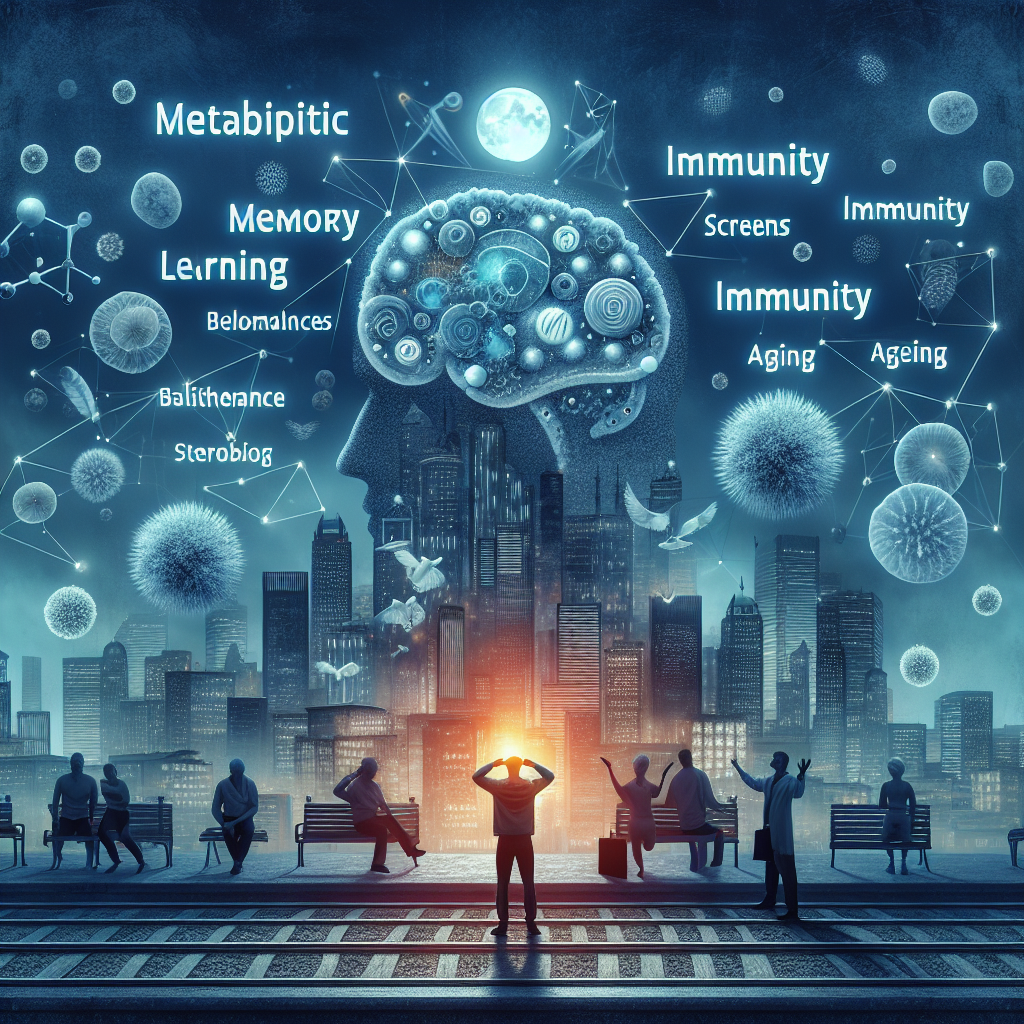
Sleep is not downtime; it is active biology that orchestrates learning, metabolic balance, immune resilience, and healthy aging. Yet modern life—late-night screens, irregular schedules, round-the-clock work, and chronic stress—pushes sleep aside, with real health costs. Research consistently links inadequate or poor-quality sleep with impaired attention, mood disturbances, higher accident risk, and increased susceptibility to illness. Understanding how sleep works and adopting practical, evidence-informed strategies can help most people improve sleep quality, while recognizing that individualized guidance from healthcare professionals is essential when problems persist.
Insufficient sleep is common in contemporary societies, where shift work, artificial light, and digital media extend wakefulness beyond natural limits. Adults generally function best with about 7–9 hours per night, yet many obtain less, accumulating a sleep debt that degrades alertness and decision making. Over time, chronic short sleep is associated with higher rates of metabolic dysfunction and cardiovascular strain, underscoring sleep’s role as a foundational pillar of health. Improving sleep duration and regularity is therefore relevant not only for day-to-day performance but for long-term well-being.
Sleep is governed by two interacting systems: a circadian clock that aligns physiology with the 24-hour light–dark cycle, and a homeostatic drive that builds “sleep pressure” the longer we are awake. Across the night, the brain cycles between non-REM (especially slow-wave sleep) and REM sleep, each with distinct electrical signatures and functions. Slow-wave sleep features large, synchronized brain oscillations and reduced metabolic activity, while REM involves active brain patterns and muscle atonia. Regular exposure to morning daylight and dim evening light helps keep the circadian clock synchronized so these stages unfold at the right times.
Memory consolidation showcases sleep’s precision engineering. During slow-wave sleep, hippocampal “replay” of recent experiences coordinates with cortical slow oscillations and sleep spindles, stabilizing facts and spatial memories. REM sleep appears to support integration of emotionally salient information and refinement of procedural skills, complementing non-REM processes. The synaptic homeostasis hypothesis further proposes that sleep helps recalibrate synaptic strength built up during wake, preserving salient connections while reducing noise.
Practically, studying earlier in the day, avoiding all-nighters, and sleeping soon after learning can boost retention without extra effort. The immune system also keeps time with sleep. Pro-inflammatory cytokines like interleukin-1 and TNF dynamically interact with sleep regulation, and even a single night of short sleep can transiently reduce natural killer cell activity. Studies show that people who sleep adequately around vaccination tend to mount stronger antibody responses than those who are sleep-deprived.
Conversely, chronic sleep restriction is linked with higher markers of systemic inflammation, which can exacerbate cardiometabolic stress. Prioritizing consistent, sufficient sleep thus supports immune readiness and recovery. Sleep further intersects with healthy aging through brain clearance and neural maintenance. In deep non-REM sleep, the brain’s glymphatic system increases the exchange of cerebrospinal and interstitial fluid, facilitating clearance of metabolic byproducts.
Aging is associated with lighter, more fragmented sleep and a reduction in slow-wave activity, patterns linked in observational studies to cognitive decline risk, although causality is complex and bidirectional. Breathing disorders such as obstructive sleep apnea also become more common with age and can disrupt oxygen levels and sleep architecture. Protecting sleep quality across midlife and later decades is a practical step for maintaining cognitive and physical function. Translating the science into daily habits starts with regularity: going to bed and waking up at consistent times, even on weekends, strengthens the circadian system.
Seek bright outdoor light soon after waking, and reduce exposure to bright and blue-enriched light in the evening; warm, dim lighting helps melatonin rise naturally. Keep the bedroom cool, dark, and quiet; many people sleep better around 18°C/65°F with minimal noise and blackout conditions. Time stimulants wisely: caffeine’s half-life can be 5–7 hours, so consider avoiding it in the late afternoon and evening, and remember that alcohol may hasten sleep onset but fragments sleep later in the night. Evening routines can smooth the transition from wake to sleep.
A consistent wind-down period—gentle stretching, reading on paper, or a warm shower—signals the brain that rest is imminent. If worries crowd the mind, a brief “brain dump” on paper or a to-do list can reduce pre-sleep rumination. Daytime physical activity supports better sleep, but vigorous workouts close to bedtime may be stimulating for some; earlier sessions often work better. Short, early-afternoon naps can be helpful if needed, but long or late naps may impair nighttime sleep.
Some situations warrant structured approaches or clinical input. Cognitive behavioral therapy for insomnia (CBT-I) is recommended by clinical guidelines as a first-line treatment for chronic insomnia and can improve sleep efficiency without medications. For jet lag or shift work, strategic timing of light exposure, meal timing, and sleep scheduling helps shift the body clock; discussing individualized plans with a clinician is wise, especially if considering melatonin or other aids. Loud snoring, witnessed breathing pauses, pronounced leg movements, or persistent daytime sleepiness despite adequate time in bed are signals to seek professional evaluation.
Healthcare professionals can help identify contributing conditions and tailor strategies safely. Taken together, sleep is an active investment that underpins learning, immune resilience, and aging well. You don’t need a perfect routine to benefit; small, consistent changes—more morning light, a steadier schedule, a cooler, darker bedroom—compound over time. Track what you change and how you feel, then refine.
For persistent difficulties, or when medical conditions are present, consult a healthcare professional for personalized guidance that aligns sleep health with your broader goals.












































